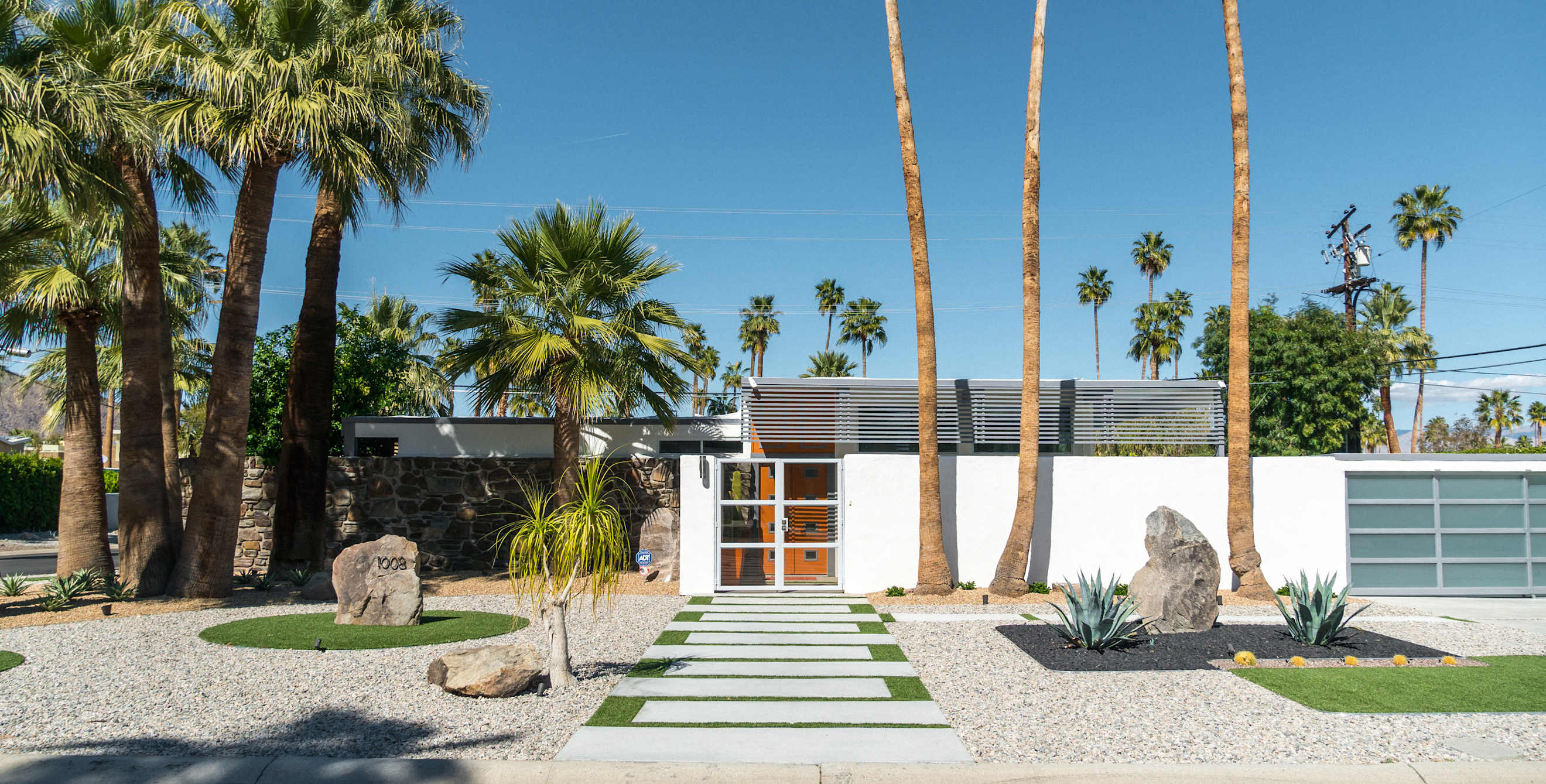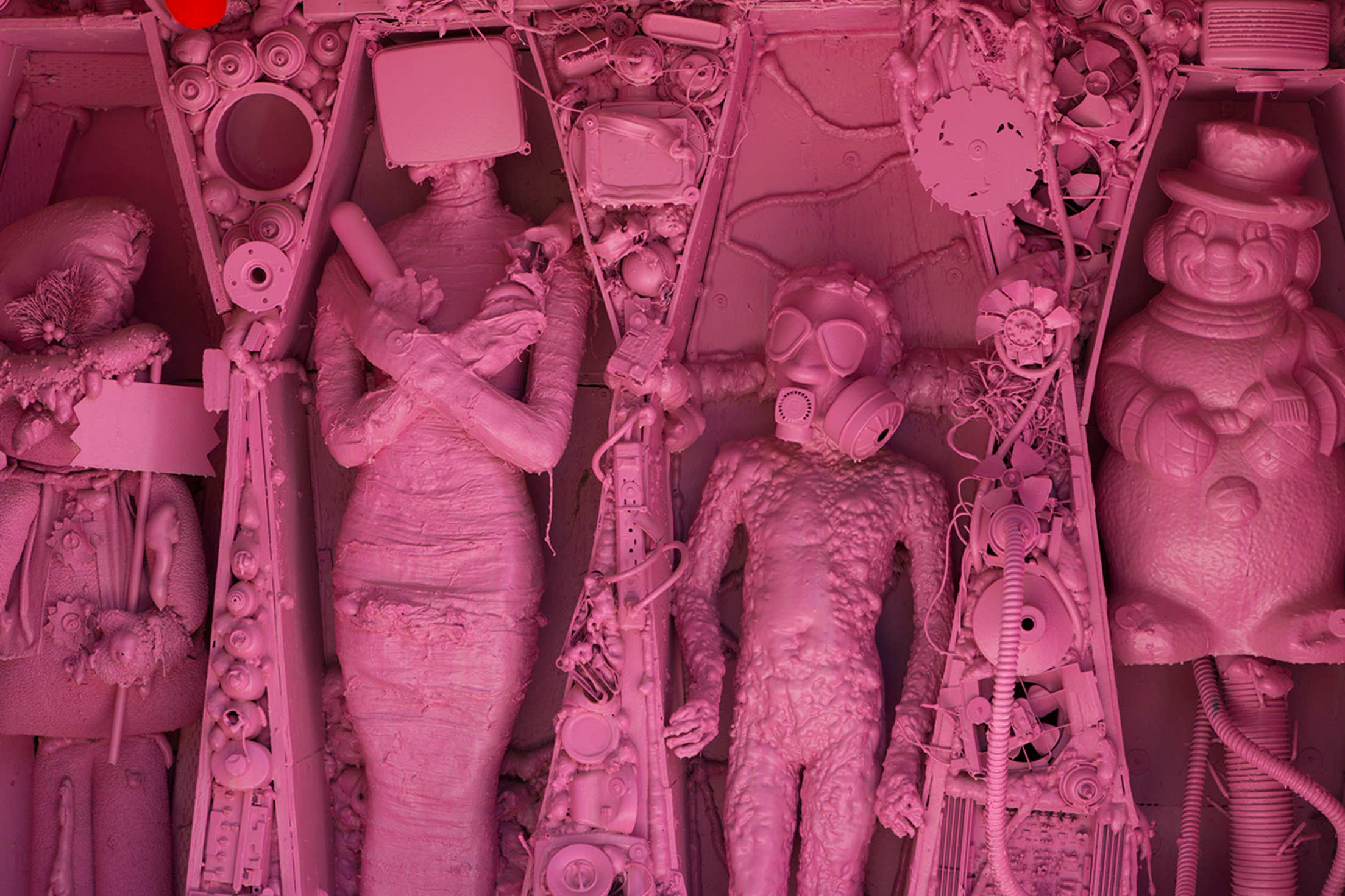
Palm Springs Winter Escape
Palm Springs and Joshua Tree National Park peak in winter with hip offerings and outdoor adventure.

When 20th-century engineers arrived in Southern California to tame the sunkissed valley where the Mojave and Colorado Deserts meet, they didn't see much beyond prickly plants and sand. They terraformed the baked land into a luscious Eden of citrus and dates. Soft bedsheets and swimming pools followed. Hollywood's hippest came to carouse beyond the reach of the studio bosses, bringing with them a taste for striking modern design and the money to pay for it. From day one Palm Springs has had a flair for the dramatic.
Here in the desert, 110 miles east of Los Angeles, the forces of humanity and nature collide so abruptly that even seasons seem confused. The sun shines 350 days a year, and come January and February, the raw terrain turns lovely and nurturing. Snow may dust the San Jacinto Mountains, but down below, revelers twirl in tank tops at poolside parties. In nearby Joshua Tree National Park, cooler temperatures allow comfortable contemplation of the landscape's improbably shaped boulders and plants. While much of the hemisphere hibernates, the brittlebushes bloom with the dazzle of yellow suns.
Midcentury architectural eye candy decorates the area, one of the densest locales in the country for such treasures. Five-dollar tourist maps point to some famous examples, such as the House of Tomorrow, a cantilevered saucer perched on a rock wall, where Elvis and Priscilla Presley holed up on their honeymoon. The Palm Springs Modernism smartphone app offers more than 80 self-guided tour options. In 2014, the Palm Springs Art Museum opened the Architecture and Design Center in a single-story 1961 bank building that's all floor-to-ceiling windows sandwiched between two wafers of concrete.

Giant sculptures packed with tiny details fill the outdoor space at Robolights.
Palm Springs is still a place of creativity, something that's obvious at Robolights, a four-acre plot on which Kenny Irwin Jr. has transformed roughly 1,000 tons of electronic junk into sculptures such as Mongolian Easter Bunny, fashioned out of VHS tapes and old Nintendo game controls.

A La Mod is a trove of handsome design objects.
In the Uptown Design District, shops like A La Mod show off the city's wealth of midcentury furniture and housewares. Down the street, on the patio at Cheeky's, a wildly popular brunch spot, you can get a flight of bacon—five strips flavored with ingredients like dates or jalapeños. The weekly VillageFest on Thursday nights brings scores of food carts, art vendors, and musicians downtown. On any day, you can stroll Palm Canyon Drive and read off the celebrity names on 300 stars embedded in the concrete.

Arugula, aioli, and a fried egg dress up the breakfast BLT at Cheeky’s.
Grand as they are, these human achievements begin to shrink as you venture into nearby Joshua Tree National Park, a vast preserve the size of Rhode Island. "The desert owes its soul to its extremes," says ranger George Land, and the starkness of the landscape is palpable. Some 30 million people live within a few hours of it, and yet the silence is profound.
The area is so rich in uniquely adapted plant life that activists proposed the national park be called Desert Plants as they fought for its establishment in the 1930s. Out here, bighorn sheep and antelope ground squirrels scamper through the high-desert terrain. Scott's orioles—one of 240 species of birds that call the park home—whip around sharp rocks called monzogranites piled so strangely that visitors sometimes think they're fake. The 1.7-mile walk around the aptly named Skull Rock near Jumbo Rocks Campground will have you wondering too.
All in all, 191 miles of trails wend through this otherworldly place where the sky takes on a deep, soothing blue. Spend some sweat on the steep, three mile out-and-back hike to the top of 5,461-foot Ryan Mountain for sweeping views of boulder-strewn valleys. Or keep it easy with the 1.3-mile Hi-View Nature Trail loop, which passes through stands of Joshua trees on its way to a ridge overlooking Black Rock Canyon. A self-serve guide for the nature trail, available at the Black Rock Visitor Center, helps you identify plants growing along the way and points out that the park's namesake isn't a tree at all, but a member of the agave family with spindly limbs that seem to beseech the heavens for light.
The drive up to Keys View may be the most spectacular way to end the day, with broad vistas of Coachella Valley. The Salton Sea sits to the south, and just beyond it you see Mount Signal, nearly 100 miles away in Mexico. So linger as the sky darkens, if you will, and ponder the drama. Watch the lights of Palm Springs flicker to life out of the nothingness thousands of feet below. The comforts of culture and civilization await, but here on the fringes the only thing that's tame is you.